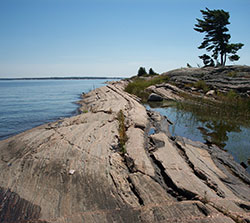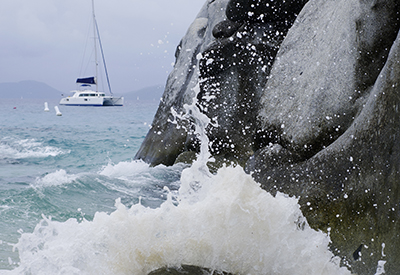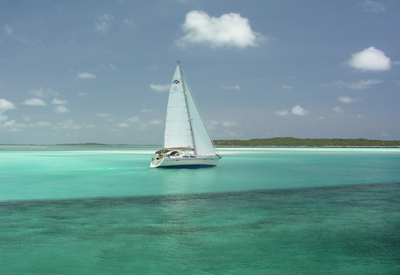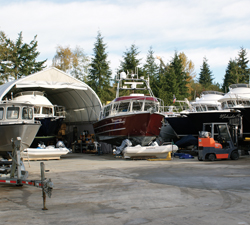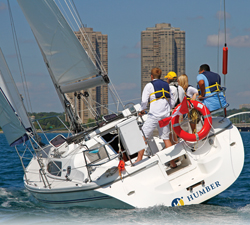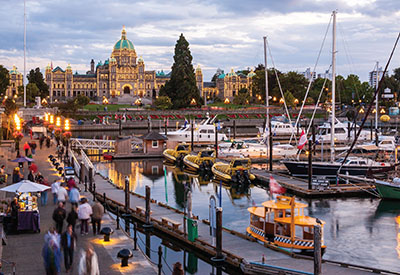Bah…Baja!

By Elizabeth A. Kerr
Baja, Mexico
I have always wanted to go to Baja, but like many of the other 25+ destinations on my bucket list, I still hadn’t got round to it. Imagine my delight when a last minute invite – timed perfectly around a crazy production schedule – found me basking in the beauty of the Marina Costa Baja ready to hop on one of Mooring’s brand new, fully loaded Power 474s with a bunch of like-minded journalists, ready for a first-hand experience of a lifetime.
The first day – ‘the getting to know one another day’ – found us only six miles from our departure point in La Paz, Mexico, in the well-protected anchorage of Caleta Lobos. The hues and clarity of the water seduced some of us to don snorkeling gear (after a quick brief, of course) and adventure into the waters to gaze at the exotic colours of living coral reefs and some of the more than 600 dazzling species of marine life.
Although, personally I’m a strong swimmer with little or no fear of an underwater adventure, snorkeling here requires no special training or expensive equipment. If you can swim and breathe through a tube, you’re good to go! And snorkelling is a daily rite here. No matter, because you’ll be an expert in no time.
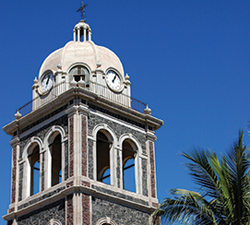 The next morning, we depart for Los Islotes – a group of small islands inhabited by a large colony of California sea lions, many of whom will swim and play with snorkellers or divers (depending on the time of year). The islands are also used for nesting by thousands of sea birds, and the white splashes covering the islands are bird poop, although you could be temporarily tricked into thinking it was snow!
The next morning, we depart for Los Islotes – a group of small islands inhabited by a large colony of California sea lions, many of whom will swim and play with snorkellers or divers (depending on the time of year). The islands are also used for nesting by thousands of sea birds, and the white splashes covering the islands are bird poop, although you could be temporarily tricked into thinking it was snow!
It was on to Ensenada Grande – recently named one of the most beautiful beaches in the world – that offered us its pink volcanic cliffs, beach palapas to shade under while eating a picnic lunch and a haven for shellseekers like me.
Next stop: San Francisco – the Isla of San Francisco that is – just 18 miles away. Hiking here takes you along a high ridge that overlooks "The Hook" where you can explore the well-known cactus forests, and enjoy the peace and serenity of a large lagoon. Some went snorkeling…again. We highjacked the rib and cruised, going from point to point around the half-moon shaped bay only to discover a tremendous flock of pelicans dive-bombing into the water to catch fish. Typically not the most elegant bird, these were mesmerizing.
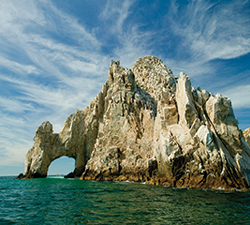 Puerto Gatos greeted us on the next day…whatever day that was.You do forget after a while. En route, the scenic coastline and bounty of sea life along the way with the perfect background of reddish, rocky bluffs and pristinely white sand beaches. We stopped in Aqua Verde – a small fishing village with homes, one school and a small store. The keen fishermen on board took this opportune moment to catch some grouper and tuna. Tonight’s dinner menu was set.
Puerto Gatos greeted us on the next day…whatever day that was.You do forget after a while. En route, the scenic coastline and bounty of sea life along the way with the perfect background of reddish, rocky bluffs and pristinely white sand beaches. We stopped in Aqua Verde – a small fishing village with homes, one school and a small store. The keen fishermen on board took this opportune moment to catch some grouper and tuna. Tonight’s dinner menu was set.
We then powered on to Los Candalleros – a great area for both fishing and diving around massive rocky fingers that rise about five miles southwest of Puerto Escondido (where we moored that night) and distinguished by sheer vertical facades dropping to depths of almost 200 feet.
When we arrived at Puerto Escondido, we took a taxi to the town of Loreto to enjoy the streets and restaurants of this quaint and historic place. Loreto was the original capital of Baja, California back when the state reached all the way up to the southern border of Oregon. In fact, the very first mission of all the California missions is in Loreto – a town rich in history and architecture. What you likely haven’t heard of is that Loreto is poised to cash in on the next big tourism boom. Fonatur – a large developer – has recently turned its attention to Loreto suggesting it will soon join Mexico's list of tourism heavyweights kin to Los Cabos and Ixtapa. Get there soon.
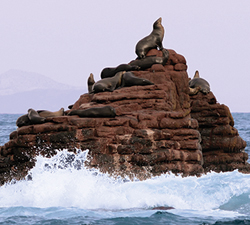 Although a delightful cruise in every sense – the boat, the people, the crew, the food and the scenery – I can just start to sense that we’ve passed the halfway mark, but I don’t start counting down yet!
Although a delightful cruise in every sense – the boat, the people, the crew, the food and the scenery – I can just start to sense that we’ve passed the halfway mark, but I don’t start counting down yet!
We are now heading over to Isla Santa Catalina to explore an awesome giant barrel cactus and for the more fearless seek out the rattleless rattlesnake, indigenous only here (or so the legend goes). En route to San Everista to spend the evening, we stop for one final snorkeling fix at Punta Ballena.
Our last full day on board, we head back to Caleta Lobos – our first anchorage. We climb into the tender and hit the beach for our last supper at the Pichilinque restaurant. One last sleep. One last leisurely swim before breakfast. One last look at the Sea of Cortez – a stunning distinction of calm blue waters against the arid backdrop of the Baja Peninsula.
One last look. Bah humbug!
FAST FACTS
LOCATION
La Paz, the heavenly capital of the state of Baja California Sur, lies in northwest Mexico. It is one of the main cities of the southeastern Baja, California Peninsula region and is located 220 km (136 mi) north of Los Cabos and 1464 km (907 mi) south of Tijuana.
LANGUAGES
Spanish & English
CURRENCY
Pesos
CLIMATE
The average year-round temperature is 24º C (75º F).
GETTING THERE
There are no direct flights to La Paz (except from Vancouver).
Air Canada
Delta
Air Mexico
Mexicana
Alaska Airlines*
*Vancouver only
RESOURCES
www.baja.com
CAPTIONS
Photo 1 – The Baja Peninsula boasts one of the highest concentrations of marine life in the world.
Photo 2 – The tower of the mission in Loreto.
Photo 3 – El Arco (The Arch), a spectacular rock formation at the tip of Baja.
Photo 4 – A large colony of sea lions inhabit this small rocky isle.

